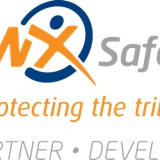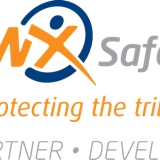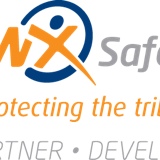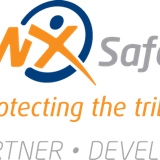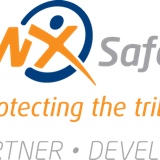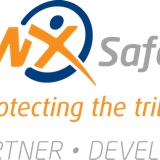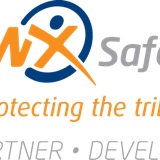Information
-
Document No.
-
Audit Title
-
Client / Site
-
Conducted on
-
Prepared by
-
Location
-
Personnel
RESPONSIBLE SUPERVISOR TO COMPLETE WITHIN 24 HOURS OF OCCURRENCE
-
Other applicable documents:
G-421 Incident investigation Procedure
G-223 Incident investigation Report
G-261 Incident Statement Report
G-051 Environmental Incident Details Form
G-264 HSEQ Incident Investigation and Response Activity Trigger Guideline
G-412 Incident Report and Investigation Flow Chart
G-405 Serious Material/ Environmental Harm Guideline -
All incidents to be reported within 24 hours of occurrence.
-
CLIENT NAME:
-
SITE ADDRESS:
-
LOCATION OF INCIDENT ON SITE:
-
incident Type
- Damage / Loss
- Environmental
- Injury
- Near Miss
- Hazard
- Non-Statistical
OCCURRENCE DETAILS
-
Incident date
-
Incident time (24 hr)
-
Reported date
-
Reported time (24 hr)
-
Brief Description of Incident
-
Name of person reported to
-
Name of person making report
-
Client incident report no.
-
Location of incident
-
Hazard classification
- Biological
- Chemical
- Electrical
- Environmental
- Erogonomic
- Mechanical
- Physical
- Procedural
- Psychological
- Radiation
PERSONNEL DETAILS
-
Personnel involved
-
Gender
-
Date of birth (dd/mm/yy)
-
Subcontractor employee
-
Subcontractor business name
-
Persons normal job classification
-
Job classification at time of incident
SHIFT DETAILS
-
Shift
-
Normal shift length (hrs)
-
Hours into shift
-
No. shift into roster
-
Roster length (ie. 7 days on / 7 off or 3 weeks on / 1 off)
INJURY CLASSIFICATION
-
Injury classification
- ADI (alternate duties injury)
- FAI (first aid injury)
- FAT (fatality)
- LTI (lost time injury)
- MTI (medical treatment injury)
- NOI (no injury)
INJURY DETAILS
-
Bodily location / disease
- Eye
- Ear
- Face
- head(Not eye /ear /face)
- Neck
- Back
- Trunk
- Shoulders & Arms
- Hands & Fingers
- Hips & Legs
- Feet & Toes
- Internal Organs
- Multiple Locations
- General / Unspecified Locations
- Dislocations
-
Nature of injury / disease
- Fractures (Excl. Vertebra)
- Fracture of Vertebra
- Internal Injury of Chest etc
- Sprains & Strains
- intracranial Injury
- Superficial Injury
- Traumatic Amputation
- Open Wound, no Amputation
- Bruns
- Contusion & Crush Injury
- Foreign Body
- Effects of Weather (Exposure)
- Injury to Nerves / Spinal Cord
- Poisoning & Toxic
- Other & unspecified Injuries
- Multiple Injuries
- Damage to Artificial Aids
- Nervous system
- Deafness
- Eye Disorders
- Dermatitis & Eczema
- Muscle & Tendon Disorders
- Musculoskeletal System
- Digestive System
- Skin & Subcutaneous Tissue
- Hernia
- Circulatory System
- Infectious & Parasitic Diseases
- Respiratory System
- Circulatory System
- Infection & Parasitic Diseases
- Respiratory System
- Other Diseases
- Cancer & Neoplasms
- Mental Disorders
-
Has a GP (Doctor) been consulted
EQUIPMENT AND PROPERTY DAMAGE
-
Damage to (What equipment / property was damaged?)
- Ancillary
- Bogger
- Bobcat
- Buildings/Infrastructure
- Cabolter
- Change Vehicle
- Crane
- Crusher
- Dozer
- Drill Rig
- Drill Rig - Long Hole
- Dump Truck
- Excavator
- Forklift
- Front End Koader
- Generator Set
- Grader
- Hand Tool
- Hiab
- Integrated Tool Carrier
- Jumbo
- Light Vehicle
- Moxy
- Power Tool
- Scissor Lift
- Scraper
- Screening Plant
- Service Truck
- Shotcrete Rig
- Roller
- Telescopic Handler
- Third party equip/prop damage
- Truck (Other)
- Water Truck
- Welder
- No equip. or property damage
- Other
-
Damage category
- ancillary
- business loss
- heavy equipment
- light vehicle
-
Asset / Plant No.
-
Estimated repair cost ($):
-
Other costs ($)
NEAR MISS / HAZARD
-
Potential for
- environmental impact
- equip / property damage
- financial loss
- high potential incident
- personal injury
- production loss
- other
-
Note: A High Potential incident is an undesired occurrence, which under slightly different circumstances, could have resulted in harm to people, damage to property or loss to process.
ENVIRONMENTAL IMPACT
-
Impact to (What, if, was impacted during the incident?)
- air
- community
- flora - specie
- fauna - specie
- ground water
- heritage
- land
- no environmental damage
- marine
- surface water
- other
-
Pollutant (Nominate pollutant type)
-
Quantity and Unit (circle) (if not know, please estimate)
-
Kilograms
-
Litres
-
Tonnes
-
Complete and attach G-051 Environmental Incident Details for all environmental incidents having a risk rating of L5 and above.
INVESTIGATION
-
Identify system errors, basic and immediate cause and agency for all incidents below. All incidents >_M13 shall complete G-223 Incident Investigation Report.
-
System errors (standards and procedures, resourcing, training, operational vs safety requirements, change management, planning)
- inadequate company standards
- inadequate work standards
- inadequate procedures
- inadequate training in procedures
- inadequate programs
- inadequate planning
- inadequate hazard / risk review
- inadequate control of hazard / risk
- inadequate resourcing/safety equipment
- safety vs operational conflicts
- other
-
Basic Cause(people and job factors)
- Abuse or misuse
- Excessive frustration
- Exposure to health harzards
- Exposure to temp extremes
- Fatigue
- Improper incentives
- Improper motivation
- Inadequate training/induction
- Inadequate instruction
- Inadequate maintenance
- Inadequate supervision
- Inadequate purchasing
- Inadequate work standards
- Inadequate equipment/tools
- Inadequate engineering
- Inadequate discipline
- Inappropriate aggression
- Injury / illness
- Lack of skill
- Lack of knowledge
- Lack of experience
- Mental stress
- Misunderstood instruction
- Non compliance to process
- Non compliance to permit
- Physical stress
- Physical incapacity
- Psychological Incapacity
- Physical disability
- Use of non-standard procedures
- Peer pressure
- Safety vs operational conflict
- Wear & tear
- Work overload
- Other
-
Immediate Cause (substandard practices / acts / conditions)
- Congestion or restricted area
- Defective tools and equip
- Defective materials
- Excess illumination
- Excessive noise
- Excessive dust
- Explosion hazard
- Environmental conditions
- Fail to use PPE / use correctly
- Failure to secure
- Failure to isolate
- Failure to obey rules
- Failures to follow procedure
- Failure to warn
- Fire hazard
- Ground conditions
- Hazardous conditions
- Horseplay
- Improper speed
- Improper lifting
- Improper placement
- Improper loading
- Improper positioning
- Inattention
- Inadequate ventilation
- Inadequate warning system
- Inadequate guards
- Inadequate barriers
- inadequate illumination
- inadequate PPE
- inadequate design
- inadequate communication
- inadequate guarding
- inadequate storage
- inadequate inspection
- poor housekeeping
- radiation exposure
- removed safety devices
- surface gradient
- temperature extremes
- using drugs or alcohol
- using defective tools
- using defective equipment
- unauthorised use of equip
- other
-
Agency of incident (What was the action, activity, energy or substance that enabled the incident to occur? Generally this includes contact with / exposure to / fall from / failure of / hit by / impacted by ........something (agent) that contributed to incident)
- air pollutants
- biological agents
- behaviour
- corrosion
- cultural / heritage
- chemicals
- dust / particles
- effluent
- eletricity
- explosives
- erosion / weathering
- flora
- fauna
- falls from height
- falls from same level
- gas
- hit by moving object
- hit by stationery object
- hitting objects with body
- heavy vehicle
- heat / cold / temperature
- humidity
- hydrocarbons (fuel)
- hydrocarbons (oils)
- hazardous waste
- hazardous substances
- light vehicle
- mental stress
- mechanical vibration
- multiple mechanisms
- machinery / equipment
- noise
- physical agent
- physical stress
- radiation
- refuse / litter
- repetitive movement
- sediment
- slide or cave-in
- smoke
- tools
- variations in pressure
- vandalism
- wind
- water
- unspecified mechanisms
- other
INCIDENT DESCRIPTION
-
Description of event (briefly describe what happened
-
How / Why did it happen? (briefly describe how / why it happened)
-
Immediate Actions?
-
Use G-264 to determine risk like hood, consequence, notification and reporting requirements.
RISK LEVEL
-
Risk like hood level
-
Risk consequence level
-
Resultant risk score
REGULATORY AND OTHER NOTIFICATIONS
-
Is this a Significant Incident?
-
Identify the highest level of notification required for this incident below.
Refer G-421 Incident Reporting and investigation procedure. -
Internal (site / project)
-
External (media, relatives, other AWX sites)
-
Client
-
Regulatory Authority
COMMENTS
-
Field Staff Member:
-
Name (print)
-
Signed
-
Date
-
Client:
-
Name (print)
-
Signed
-
Date
-
Resource:
-
Name (print)
-
Signed
-
Date
-
Business Development Manager:
-
Name (print)
-
Signed
-
Date
-
Business/Division Manager:
-
Name (print)
-
Signed
-
Date
-
National Safety Managers Comments:
-
Name (print)
-
Signed
-
Date
CORRECTIVE ACTIONS
-
Identify any immediate corrective / preventive actions taken. Identify hierarchy methods used (elimination, substitution, engineering, administration or personal protective equipment)
-
Action 1
-
Hierarchy method
-
Target date
-
Completion date
-
Person responsible
-
Action 2
-
Hierarchy method
-
Target date
-
Completion date
-
Person responsible
-
Action 3
-
Hierarchy method
-
Target date
-
Completion date
-
Person responsible
-
Action 4
-
Hierarchy method
-
Target date
-
Completion date
-
Person responsible
